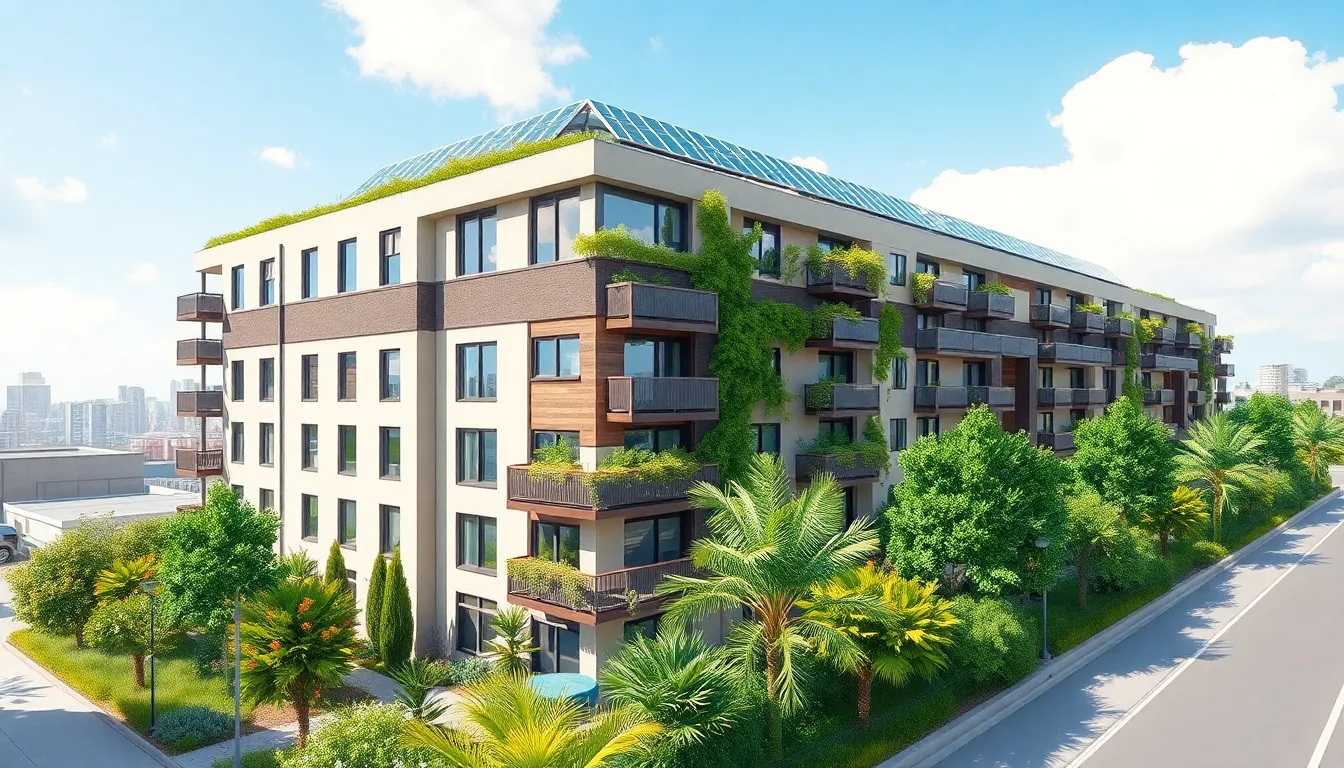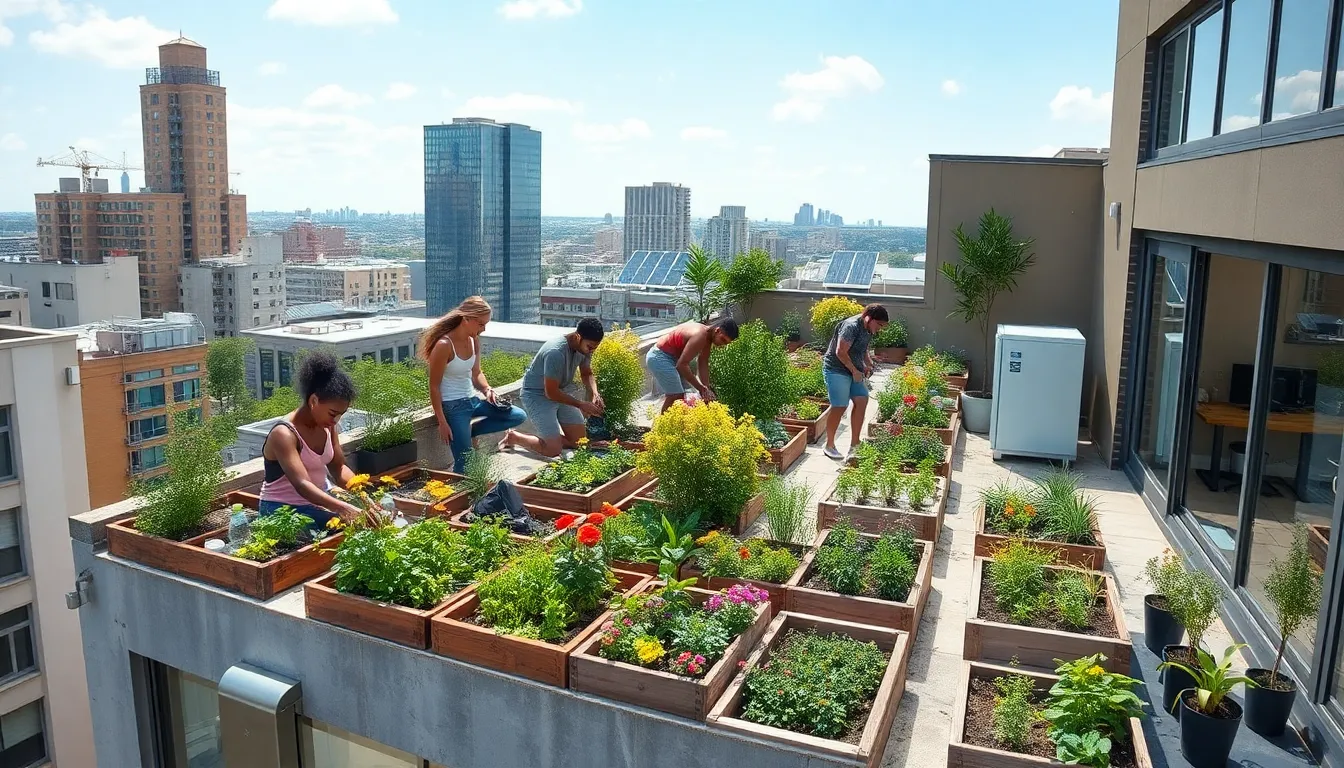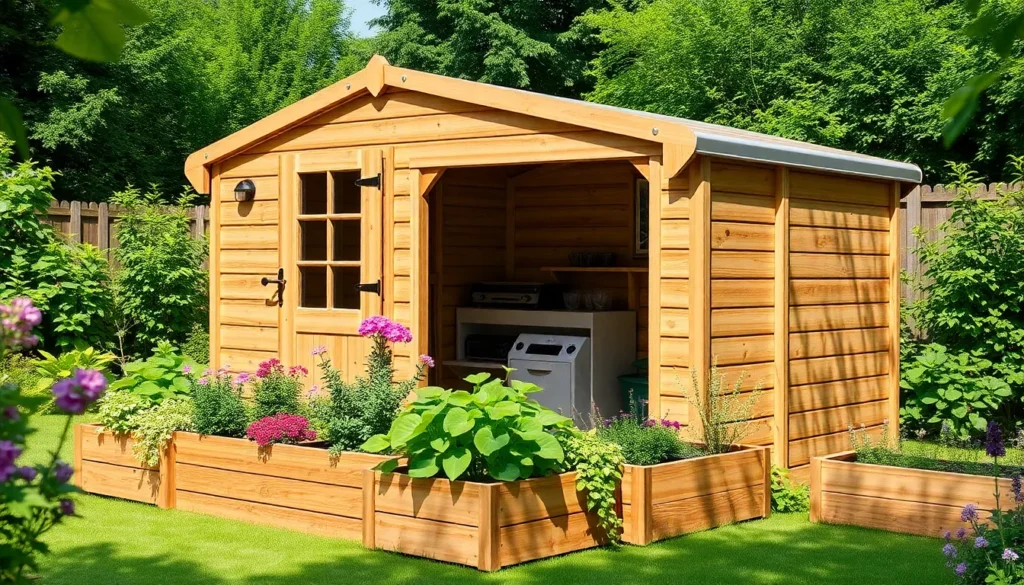In a world where the planet seems to be throwing a tantrum, sustainable apartment living is the superhero we didn’t know we needed. Imagine living in a cozy space that not only feels like home but also gives Mother Earth a high-five every day. With eco-friendly choices and smart innovations, urban dwellers can embrace a lifestyle that’s as stylish as it is responsible.
Sustainable living isn’t just for tree-huggers anymore. It’s about making savvy choices that save money and reduce your carbon footprint. From energy-efficient appliances to rooftop gardens, sustainable apartments are popping up everywhere, proving that green living can be chic and fun. So why not turn your next apartment into an eco-friendly oasis? It’s time to live well while loving the planet—because who says you can’t have your avocado toast and eat it too?
Table of Contents
ToggleUnderstanding Sustainable Apartment Living
Sustainable apartment living integrates eco-friendly practices within urban environments. This approach minimizes environmental impact while enhancing the quality of life for residents.
Definition and Principles
Sustainable living in apartments focuses on reducing energy consumption and waste. It emphasizes resource efficiency and the use of renewable materials. Key principles include energy conservation, water management, and waste reduction. These elements work together to create healthier indoor environments and lessen the carbon footprint. Use of biodegradable products and sustainable landscaping contributes to this harmonious living. A commitment to sustainability is not limited to individual actions; it also encompasses community involvement and shared resources.
Benefits of Sustainable Living
Living sustainably offers multiple advantages for both individuals and communities. Reduced utility bills result from energy-efficient appliances and smart technology. Improved air quality supports better health outcomes through ventilation and non-toxic materials. Sustainable policies foster stronger community bonds through shared initiatives, such as community gardens and recycling programs. Increased property value often accompanies eco-friendly upgrades, appealing to environmentally conscious buyers. Encouragement of a sustainable lifestyle leads to a greater appreciation of natural resources, promoting long-term environmental stewardship.
Key Features of Sustainable Apartments

Sustainable apartments incorporate various features that significantly reduce environmental impact. Residents enjoy benefits from energy-efficient systems, responsible water usage, and eco-friendly building materials.
Energy Efficiency
Energy efficiency stands as a cornerstone of sustainable apartments. They often include Energy Star-rated appliances that consume less electricity, thereby helping lower utility costs. Well-insulated walls and windows maintain indoor temperatures, reducing the need for heating and cooling. Solar panels frequently enhance energy independence, allowing residents to harness renewable energy sources. Smart home technology also aids in monitoring energy consumption, making it easier to identify areas for improvement.
Water Conservation
Water conservation measures appear prominently in sustainable apartments. Low-flow showerheads and faucets minimize water usage without sacrificing performance. Rainwater harvesting systems collect and reuse water for irrigation, reducing reliance on municipal supplies. Greywater recycling systems allow residents to repurpose wastewater from sinks and showers for landscaping, promoting eco-friendly practices. Landscaping with drought-resistant plants further lowers outdoor water needs, promoting sustainability.
Sustainable Materials
Sustainable materials play a vital role in constructing eco-friendly apartments. Builders often use reclaimed wood and recycled materials, minimizing waste and promoting resource conservation. Non-toxic paints and finishes improve indoor air quality while ensuring safety for occupants. Durable materials resist wear and tear, extending lifespan and reducing the need for replacements. Local sourcing of materials also decreases the carbon footprint associated with transportation, further enhancing the apartment’s sustainability.
Tips for Implementing Sustainable Practices
Implementing sustainable practices in apartment living enhances both comfort and environmental responsibility. These tips guide residents toward eco-friendly choices.
Reducing Waste
Minimizing waste plays a crucial role in sustainable living. Residents can start by using reusable bags for shopping and opting for bulk items to limit packaging. Composting organic waste, such as vegetables and fruit scraps, significantly reduces landfill contributions. Recycling materials like paper, plastic, and glass ensures they are repurposed rather than discarded. Participating in local recycling programs maximizes waste reduction efforts. Engaging in community cleanup events fosters a shared commitment to maintaining cleaner surroundings.
Community Engagement
Community engagement strengthens bonds while promoting sustainability. Joining local groups centered on environmental initiatives encourages teamwork and shared resources. Participating in community gardens offers fresh produce and enhances green spaces. Organizing or taking part in workshops on sustainable living techniques provides valuable knowledge and skills for residents. Establishing neighborhood exchange programs allows residents to share tools and resources efficiently. Active involvement nurtures a supportive community atmosphere focused on eco-friendly practices.
Choosing Eco-Friendly Products
Choosing eco-friendly products significantly impacts sustainability efforts. Selecting items made from recycled materials reduces overall consumption. Residents should prioritize non-toxic cleaning supplies to improve indoor air quality. Energy-efficient appliances, such as those rated by Energy Star, lower energy usage and utility costs. Opting for furniture constructed from sustainable materials supports responsible manufacturing practices. Investing in LED lighting offers long-lasting energy savings while enhancing overall aesthetics. These choices demonstrate commitment to reducing environmental footprints.
Case Studies of Successful Sustainable Apartments
Sustainable apartments demonstrate innovative solutions to urban living challenges. Various successful models exist, showcasing best practices in sustainable design and implementation.
Examples from Major Cities
Seattle’s Bullitt Center highlights a performance-based approach to sustainability. The building generates more energy than it consumes through solar panels. Residents enjoy an abundance of natural light thanks to its extensive window design, which reduces the need for artificial lighting. Similarly, New York City’s VIA 57 West integrates green roofs and rainwater harvesting systems, contributing to substantial water conservation. Additionally, residents benefit from sharing spaces such as community gardens, enhancing social interactions.
Innovations in Design
Innovative designs incorporate sustainable technologies into their frameworks. Passive house principles allow buildings to maintain comfortable temperatures while minimizing energy use. Advanced insulation materials prevent energy loss, further improving efficiency. Smart home technologies monitor energy consumption, empowering residents to optimize resource usage. Modular construction techniques also offer sustainable alternatives by reducing waste and construction time. Incorporating biophilic design, many apartments prioritize connection to nature, enhancing physical and mental well-being for occupants.
Embracing sustainable apartment living not only benefits the environment but also enhances the quality of life for urban residents. By integrating eco-friendly practices and innovative designs, individuals can create stylish homes that reflect their commitment to sustainability. The shift towards energy efficiency and responsible resource management leads to lower utility bills and healthier living spaces.
As communities come together to support green initiatives, the impact of sustainable living becomes even more significant. It’s clear that making conscious choices in apartment living fosters a deeper appreciation for natural resources and strengthens community bonds. Ultimately, sustainable apartment living is a pathway to a brighter, more sustainable future for everyone.










